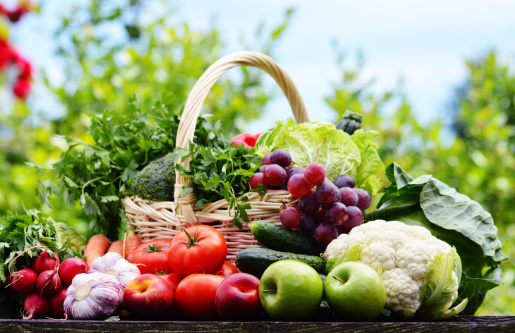“Farm to table” is all the rage these days. For example, here in the foothills we have Quiessence, and the JW Marriott spa has decided to cash in on the trend as well.

Of course, reducing “farm to table” as simply a trend really doesn’t do the movement justice. According to The Packer, using locally sourced ingredients has been popular for years and “farm to table” has topped the list of “popular trends” in every National Restaurant Association survey since 2009. After six years of being the most popular approach to food service, I think the “trend” boat has sailed. Today, if you want to get people in the door, you need to use locally sourced and delivered ingredients.
This has been a great boon for small scale farms all over the country. Now inundated with chefs and restauranteurs who constantly need fresh produce, many farmers are turning to alternative farming methods to meet the demand for their products--especially for off season produce and within in regions where certain types of produce are in hot demand but aren’t indigenous to the area...like bell peppers in Portland or avacados in Anchorage.
So what does this mean for the farming industry? Surely with all of this demand for fresh and local produce, the farming industry as a whole--not just small scale local operatons--must be booming!
Actually, this isn’t necessarily true. As the “farm to table” movement grows in popularity and alternative farming methods are adopted by smaller scale operations, the factory farm is slowly dying out.
Many assume that the slow death of factory farming must be a good thing. Factory farming has long been maligned as terrible for, well, everything. This is particularly true for farms that specialize in raising livestock and supplying the country with pork, chicken, lamb, beef, etc. In terms of produce, there have been worries about soil erosion, nutrient depletion, etc.
And then, there is the fact that dependence upon factory farms means that even small blips in weather and crop production can result in widespread problems and large blips, like the current drought in California, can wreak havoc on entire sections of industry.
Think about it: the drought in California has kept many large scale and factory farms from being able to produce enough crops to keep all of the businesses they supply properly stocked. For you, this might mean that you haven’t been able to find a decent head of lettuce for weeks. For the stores you’ve been searching, the loss of produce means a loss of revenue--often hundreds of thousands of dollars when all is said and done. This massive loss of revenue can result in a store needing to reduce its staff or its hours of operation. It means that the farms aren’t sending as much produce out, which means that they aren’t hiring as many trucks (and truck drivers) to transport their produce from their farms to the stores and restaurants who need it.
For innovative small scale farmers, however, environmental factors, pests and other hurdles aren’t as problematic. That, combined with the growth of the farm to table movement, has been a boon for small and local industries. The increase in demand for locally sourced produce and products has lead to massive profits--and not just for area farmers. Local farmers use their profits to buy up tons of equipment, from used John Deere riding mowers to hand held gardening tools, so that all of the new employees they hire will have the tools they need to do their jobs.
These new hires are earning a living wage which they then spend back into their local economies, which means the businesses they frequent are seeing more sales. Those businesses see an increase in demand and profit and need to buy more equipment and hire more people, and the cycle goes on.
It is important, though, to realize that for some areas of the country farm to table is a slow growing industry. Here in Arizona, for example, the cost of building a workable farm that produces enough food to supply local grocers and chefs is huge. This is because our arid soil isn’t conducive to most forms of produce that we actually like to consume. This means local farmers are more likely to build hyroponic and greenhouse farms, and those are incredibly expensive.
Still, in spite of hostile environmental conditions, more farm to table restaurants are opening their doors. Local farmers markets are getting busier. And if local farming can get a foothold here in the foothills, that can only be a good thing for all of us.
Do you know of a great farm to table restaurant or farmer’s market/local co-op that needs more attention? Let us know!